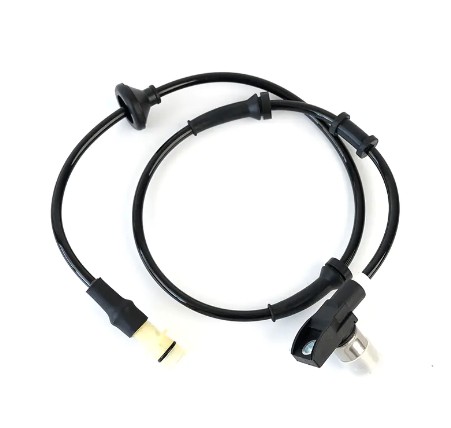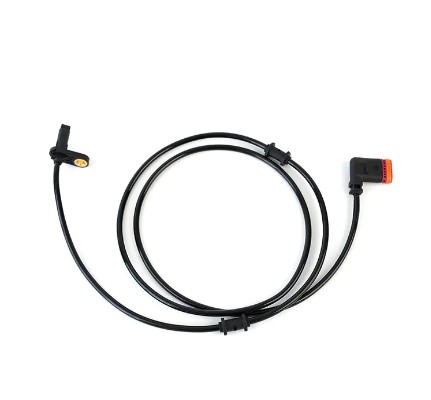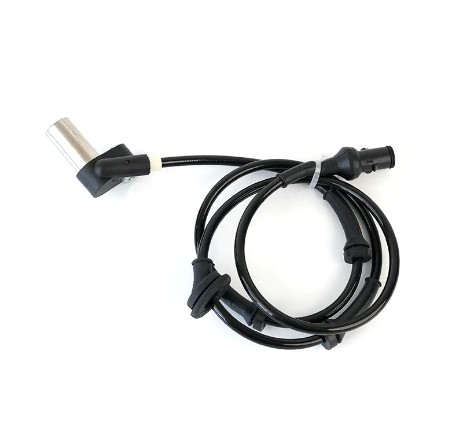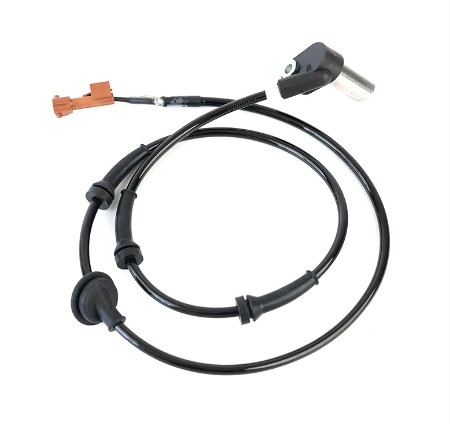ADD: Changjiang Road, Gaoyou Economic Development Zone, Jiangsu Province, 225600, China(within the Technology Innovation Center)
MERCEDES-BENZC-CLASS (W203) (2000/05 - 2007/08)MERCEDES-BENZC-CLASS Coupe (CL203) (2001/03 - 2011/06...
See Details1. Core Definition: An ABS sensor is a key component of the anti-lock braking system (ABS). It monitors the speed of each wheel in real time and sends signals to the electronic control unit (ECU), providing a basis for precise adjustment of brake pressure.
2. Main Types: The three most common types are magnetoelectric, toroidal, and Hall effect. Each generates a voltage pulse proportional to wheel speed through magnetic field changes or the Hall effect.
3. Functional Value: In addition to preventing wheel lock, sensor data is also shared with vehicle stability systems such as ESP, TCS, and ESC, improving overall driving safety and handling.
4. Industry Significance: In smart cars, industrial machinery, and automated equipment, ABS sensors, with their high sensitivity and anti-interference properties, serve as "scouts" for braking safety and are a prerequisite for efficient and reliable braking.

1. Electromagnetic Induction/Hall Effect: The permanent magnet inside the sensor rotates synchronously with the wheel ring gear, generating alternating magnetic flux that induces a sinusoidal AC voltage in the coil. The Hall effect sensor outputs a millivolt-level voltage based on changes in magnetic field strength. 2. Signal Modulation: The sensed AC signal is converted into digital pulses by a modulator and fed into the ECU, which calculates the instantaneous speed of each wheel and compares it with the set slip ratio (≈20%).
3. Closed-Loop Control: When the ECU determines that a wheel is about to lock, it instructs the hydraulic unit to momentarily reduce the braking force on that wheel and then reapply pressure, forming a "lock-release" cycle to maintain optimal wheel slip.
4. Multi-System Sharing: The same wheel speed signal can also be used by systems such as ESP, TCS, and ESC, enabling overall vehicle dynamic control and improving safety and fuel efficiency.

1. ABS Malfunction Light Illumination: The ABS warning light on the instrument panel is the most intuitive warning signal, indicating that the system has detected an abnormality.
2. Wheel Locking or Slipping During Emergency Braking: Sensor failure leads to a malfunction in brake pressure regulation, potentially leading to wheel lock, significantly increasing braking distance, and even loss of control. 3. Brake Pedal Abnormality: The pedal may pulse, vibrate, or become unable to return to its original position, affecting driving comfort and braking feel.
4. Other Systems Affected: Systems that rely on wheel speed signals, such as the TCS and ESC, may also fail simultaneously, resulting in traction control failure or vehicle skidding.

1. Reading DTCs
Use an OBD diagnostic tool to read ABS-related DTCs (such as C0035 and C0040). Sensor-related codes generally confirm the fault.
2. Resistance/Voltage Test
Use a multimeter to measure the resistance across the sensor. The typical range is approximately 1kΩ–1.3kΩ. Any resistance outside this range or no voltage output indicates internal sensor damage.
3. Visual Inspection and Cleaning
Check that the gap between the sensor and the ring gear meets specifications (1.10–1.97mm for front wheels, 0.42–0.80mm for rear wheels). Remove any contaminants, such as iron filings and mud. Excessive gap or heavy dirt can cause signal distortion. 4. Field Braking Test
Perform sudden braking in a safe area and observe whether the wheels lock or the ABS shudder is absent. If there are no signs of ABS intervention, the sensor may be faulty.

1. Stop safely: When the ABS warning light appears, slow down and stop the vehicle in a safe location to avoid locking during sudden braking.
2. Restart the vehicle: Turn off the engine and restart it to see if the light goes out on its own. Sometimes, it's a transient electronic fault that can be restored by restarting.
3. Visual Inspection: Inspect the sensor surface for dirt and debris. Clean with a cleaner and a soft brush if necessary. Many light-on issues are caused by sensor contamination.
4. Professional Diagnosis: If the light remains on, use a diagnostic tool to read the fault code and check the wiring, connectors, and power supply voltage. Replace the sensor or repair the wiring if necessary.
5. Temporary Driving Caution: If the light is on and repair is not immediately available, use normal braking. However, avoid sudden braking, driving on slippery roads, and driving at high speeds to reduce safety risks.
